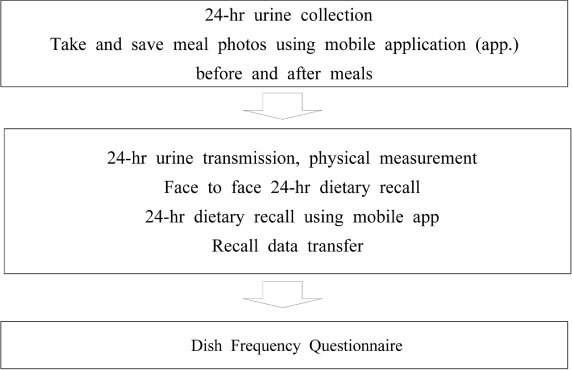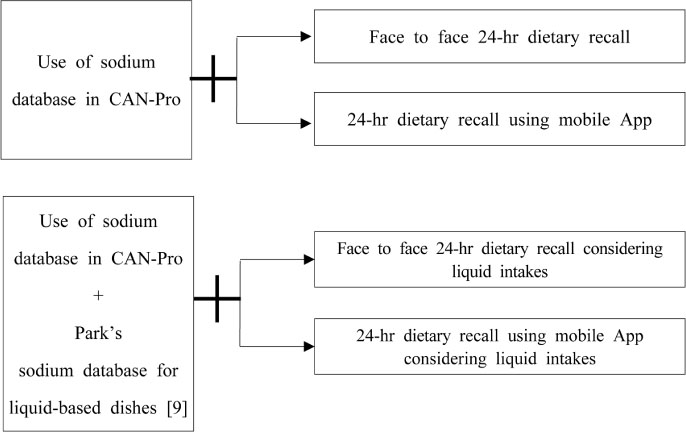Articles
- Page Path
- HOME > Korean J Community Nutr > Volume 25(4); 2020 > Article
- Research Article
- Validity of Estimating Sodium Intake using a Mobile Phone Application of 24-hour Dietary Recall with Meal Photos
- Seo-Yoon Kim, Sang-Jin Chung
-
Korean Journal of Community Nutrition 2020;25(4):317-328.
DOI: https://doi.org/10.5720/kjcn.2020.25.4.317
Published online: August 31, 2020
1Student, Department of Foods & Nutrition, Kookmin University, Seoul, Korea 
2Professor, Department of Foods & Nutrition, Kookmin University, Seoul, Korea

2Professor, Department of Foods & Nutrition, Kookmin University, Seoul, Korea

-
Corresponding author:
Sang-Jin Chung,
Email: schung@kookmin.ac.kr
Received: 13 July 2020 • Revised: 23 August 2020 • Accepted: 24 August 2020
- 499 Views
- 7 Download
- 3 Crossref
- 0 Scopus
Citations
Citations to this article as recorded by 

- Dietary Sodium and Fluid Restriction for Patients with Heart Failure
Eloisa Colin-Ramirez, Amitai Segev, Meghan Rozmahel, Justin Ezekowitz
Current Treatment Options in Cardiovascular Medicine.2024; 26(12): 347. CrossRef - Comparison between 24-hour diet recall and 24-hour urine collection for estimating sodium and potassium intakes and their ratio among Korean adults
Taisun Hyun, Mi-Kyeong Choi, Young-Ran Heo, Heekyong Ro, Young-Hee Han, Yeon-Kyung Lee
Nutrition Research and Practice.2023; 17(2): 284. CrossRef - Validity of Interviewer-Administered 24-h Dietary Recalls in Older Korean Women: A Pilot Study
Seunghee Kim, Clara Y. Park
Nutrients.2023; 15(7): 1757. CrossRef

 KSCN
KSCN







 Cite
Cite


